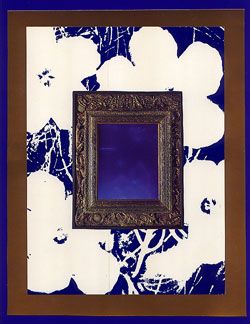|
|||
|
M
a y 2 0 0 4
|
|||

Guest
Writer
A
canvas doesn't paint itself
The art of charity by Eva Lake
As an artist who participates from time to time, I scan the Portland papers to see what kind of coverage ensues. And what I generally read is how wonderful all these collectors are – the people who put up the money. Yes, we should thank them for sure. But they got to walk out with art, didn't they? Their pictures and names are in the paper; they had a fun party and they support organizations that help those in need. Plus, they walked out with art. The sticking point in the scenario is that they didn't support the gallery or the artist, but this organization instead. There is nothing wrong with any of this, but what about the people who truly did the giving? Why are we not thanking the artists? Artists are the ones paying for the studios and the supplies, for the photography and slides and framing. Artists are donating their livelihood to those in need of health care – while often having no health insurance of their own. It's a matter of course. Often, in fact, the only thing that artists really have is art. They probably have clunker cars, no mortgage, can't afford children or vacations and I could go on ... But art they have, so will they please give it? Without the artists, none of these events would be possible. But it's so odd how the writers never congratulate them – as if the artwork just appears out of nowhere. The writers align themselves with the money instead. Collectors not only have the opportunity to help noble causes while gracing their walls but to do so at a discount. As it is, bids begin below market value, but those in the know only have to wait till the next day to apprise themselves of art at bargain-basement prices that dealers and artists did not set. When such practices become the norm it's no wonder that art made by mid-career artists can be had for a couple hundred dollars. Why pay more? It's no secret that the cheapest art market in the country is right here in Portland. These practices are obviously not all to blame but they can't be helping. Meanwhile, various organizations (and potential collectors) are calling up my friends and me, sending forms, e-mailing, etc., for information on my art or the art of people I've shown at my gallery. Where are they the rest of the year? Where is their interest in my work or gallery? I never see any of them around. They don't come into Lovelake or other small-time (but numerous) art hangouts around town. Where is their interest in art and artists the rest of the year? When I lived in New York City, I donated two pieces to one such organization and never even heard back from them. Did the work sell? Who bought it? Is it in some executive's office? I never found out – two works I spent weeks and weeks on. But it was take the goods and run – never any interest in what I was doing otherwise. Artists will always donate work, no matter what, for a multitude of reasons. They have every reason to relate to those who live at-risk and who benefit from these organizations. They often work in isolation and need to feel effective and a part of something greater. Money and fame might always elude them. Their generosity should be noted, along with artistic achievements. |
|||
|
Visit Eva's Web site at www.lovelake.org
and see more of her writing in our archives.
|
|||
|
|
|||
|
|


